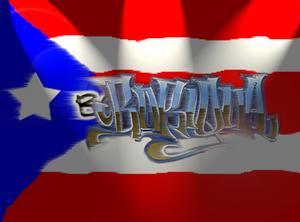Hip-hop, during the late 1980s and early 1990s, was frequently described by participants as "a Black thing, you wouldn't understand." Since the mid-1990s, it became increasingly common to hear hip-hop explained in everyday conversation as well as in mass-mediated and academic forums, as a Black and Latino phenomenon. Today's convention of describing hip-hop culture as Black and Latino and the increased mass mediated visibility of Latinos/Latinas within hip-hop would not have come about if it was not a shifting conception of blackness that emphasizes the ghetto experience.
The rise of rap being centered on the ghetto as a selling point in the latter half of the 1900s has played a part in convincing others that Latinos' artists are the core participants of hip hop. This fact is apparent in the following various ways: the greater media visibility of Latino hip-hop artists; the rise in the use of Spanish words and phrases in songs by the most popular African American rap artists; and widespread references to and images of Latinos and Latinas in rhymes, video and articles. A whole group of artists dedicated lines or even whole songs to the mamis. Latina mamis actually became one of the latest faddish hip-hop fetishes. Exoticized, eroticized and romanticized, Latinos in hip-hop have, as of late, most often been portrayed as virtual Blacks with the ghetto stamp of approval and particularly in the case of females, a sexualized flair. (15)
New York's multiethnic hip-hop culture and the integral role of Caribbean Latinos-particularly Puerto Ricans-within it has set the tone for transregional, mass mediated Latino hip-hop images. But this is a subtlety that largely remains unspoken.
Puerto Rican women had had a presence in rap lyrics before salivating after mamis became a commercial gimmick. The difference between then and now is that a theme that used to be occasionally touched upon-namely, the hot Latin mami-has nowadays become a market cliché. Another difference is that as New York becomes more Latinized, the local long standing interchangeability of Spanish/Hispanic/Latino for Puerto Ricans has come to be expanded to include Dominicans next to Puerto Ricans. Puerto Ricans used to be the prototype of exotic/erotic New York mami; now Dominicans also inform the prototype (16).
Rap music's late- 1990s commercialized mamis have helped legitimize and even trendily Puerto Ricans and by extension, Latinos as a whole. This renewed embracing of Puerto Ricans as entitled hip-hop participants invested with cultural authenticity is also connected to the wider social context of the United States, where the rising population numbers, political clout, and media visibility of Latinos highlight their desirability as consumer and/or objects of mass mediated eroticization.
Hip hop late 1990s, "Latino Renaissance," has signaled an era of greater legitimacy and visibility for Puerto Rican participants and expanded their opportunities for participation and expression. At the same time, the potential for a wider range of creative expression often fails to be fulfilled given the constraints placed on artists.
The redrawing of the realm of creative expression is reminiscent of freestyle music in the late 1980s, which pushed the bounds of New York Puerto Rican creativity through the inclusion of second generation perspectives but reproduced other essentialist myths regarding Latino cultural production. On of its central myths was the construction of a Latino aesthetic that was imagined as excise from the history and present context of Caribbean Latino cultural expression in New York.
Despite the similarities-in terms of redrawing essentialist racial boundaries-among freestyle in the late 1980s, Latin rap in the later 1980s and early 1990s, and Latino Hip hop participation in the late 1990s, a crucial distinction must be made. Although freestyle and Latin rap were defined as Latino cultural realms, core hip-hop is a Black matrix cultural sphere shared by African America and Latino youth. However, both of their contribution to hip-hop is understood and celebrated as part of a hip-hop subculture realm.


